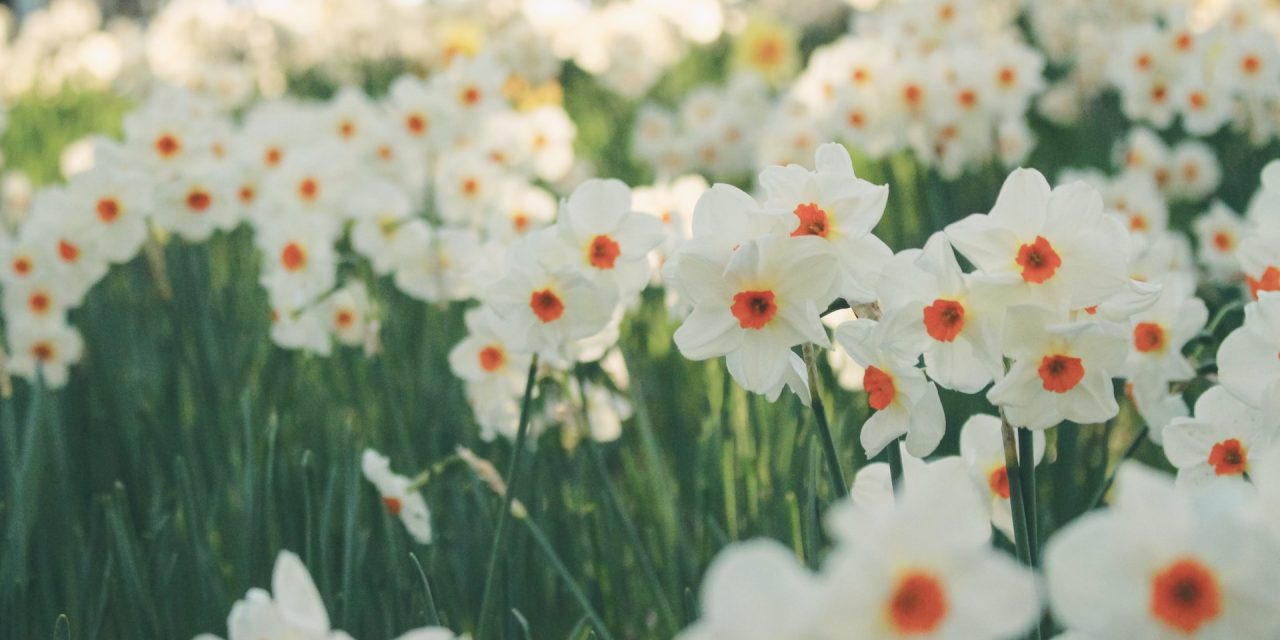Many years ago, my grandma planted several daffodil bulbs in her front yard. Each year in the spring, they are the very first pop of color that we see and are a welcome reminder of her. Even though she has been gone for a long time, our family gets an annual reminder of what she chose to plant, and we are blessed.
One of my favorite things about planting fall bulbs is the show that you get in the spring! Since we live in Zone 7, we should plant bulbs such as daffodils, tulips, hyacinths, garlic and scallions in October and November. Neatly tucked below the surface of the ground, they will lie dormant throughout the cold winter months. With the changing of the seasons and the arrival of warmer weather, they will emerge strong. For the first time since they were planted, everyone gets to see what was hiding below.
There are many websites where you can order bulbs. It is very important to do your research to ensure that the site is reputable and that the company specializes in the product you are hoping to grow. Many times, if you order from a dealer who does not specialize in plants, you will end up receiving bulbs from another country or that are subpar. Most of the time we order a specific variety, and we know exactly what we are going to get and what to expect. Occasionally, we will purchase a bulk order of mixed bulbs, and when they show themselves in the spring, it’s exciting to see what we actually planted!
When planning your garden, it is important to consider every square inch of usable ground as well as the seasonality of what you are growing. If you plan carefully, you can plant bulbs in the fall and spring, and while they are sitting beneath the ground waiting for their turn, you can plant a shorter season crop, such as herbs or greens in the soil right above them. With this method of intensive gardening, you can utilize both high-density, mixed planting and succession planting to maximize your garden space and growing season.
Another thing that I like about bulbs is that many of them are perennial so, once you plant them, they will return year after year. They are a smart investment, so it is important to choose your varieties carefully. Unless you dig them up and remove them, they may be with you for a long time.
Regardless of whether you planted fall bulbs or you intend to put some in this spring, bulbs are a great piece to your gardening puzzle and should be used strategically to enhance your space and your crop production.
Bulbs remind me of God’s principle that is found in Luke 8:17. “For nothing is concealed that will not become evident, nor anything hidden that will not be known and come to light.” In our lives, we can plant and hide many things in our hearts and in our minds. Over the seasons, they may lie dormant, but sooner or later they will show themselves, and it will be evident for all to see exactly what we’ve been busy planting.
Instead of burying ugly and unproductive things, I would rather take the advice given by the psalmist in Psalm 119:11, “I have hidden Your Word in my heart that I might not sin against You.” As easily as we can choose to sow evil and corrupt things, we can choose to plant God’s Word in our hearts and minds, so that we will not sin against Him. It is a choice and one that comes with lasting consequences.
As we kick off this new year, let me encourage you to make it a priority to memorize scripture. If we commit to doing this, as the seasons of our lives change, the evidence of what we have been planting will burst through and bless all those around us. May our Heavenly Father be glorified with our intent and effort to please Him by burying His Word in our hearts and minds. May the beauty of His Word be seen by all in due season.





